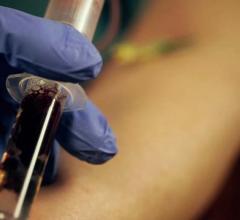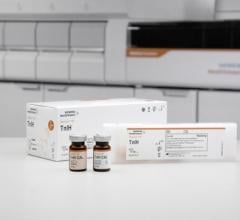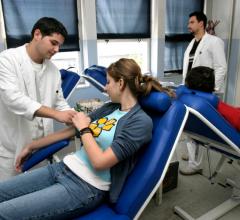January 30, 2013 — January has been a month of change for Abbott, and a senior medical devices analyst from GlobalData asserts that the company’s latest cardiac diagnostics product represents the first step in a line of new diagnostic products that will act to deliver growth over the next few years.
Abbott announced in 2011 that it planned to separate into two companies, one in medical products including devices and diagnostics, and the other in research-based pharmaceuticals, and this separation was made official on Jan. 1, 2013. With the medical products company keeping the Abbott name, the research-based pharmaceutical company is now named AbbVie, and will feature billion dollar blockbuster drug Humira among its products.
With the dust only just beginning to settle from this split, Abbott exemplified its strong presence in the cardiac biomarker in vitro diagnostics space only a week later, by gaining CE marking for its Architect Stat High Sensitive Troponin-I Assay on Jan. 9, 2013. This will challenge products from other major players such as Roche and Siemens in the diagnostic troponin market in Europe.
Savade Solanki, Ph.D., GlobalData's senior analyst covering medical devices, describes the new product’s strengths: “Abbott has reported that this high-sensitivity troponin-I assay can provide reliable data to emergency physicians two to four hours after patient admission. This is a great improvement over early generation troponin assays, where multiple testing was often required, and patients sometimes had to wait over 12 hours to allow reliable detection of troponin levels. This test will enable caregivers to make critical patient management decisions earlier, and this should result in both health and economic benefits.”
“Early detection of myocardial infarction is imperative as it allows treatment to be initiated promptly, and therefore limits permanent damage to the heart muscle. The troponins are considered to be the gold-standard cardiac biomarkers for the diagnosis and risk management of myocardial infarctions and acute coronary syndrome. Following myocardial damage, both the specificity and rapid blood release of cardiac troponins facilitate higher sensitivity compared with historical markers such as creatine kinase-MB.”
Not only are cardiac biomarkers key diagnostic tools for emergency physicians and cardiologists, but also potential big business for developers — each year emergency departments in the United States and Europe evaluate chest pain in many millions of patients. GlobalData expects the continued trend of substitution away from first-generation troponin tests and towards high-sensitivity troponin assays by clinical laboratories across the major markets. However, due to the stringent U.S. Food and Drug Administration (FDA) regulations regarding the approval of medical devices, these tests will continue to be launched in Europe long before they are available in the United States.
This approval comes at a good time for Abbott: with the separation of its research-based pharmaceutical business and subsequent creation of AbbVie, Abbott will be relying heavily on its diagnostics businesses to deliver growth over the next few years. New products will of course drive growth, and in this regard, Abbott expects to launch multiple new molecular diagnostic products over the coming years. In particular, Abbott and other major in vitro diagnostic players will view the point-of-care (POC) diagnostics market as an area of significant potential. For example, on Jan. 23, 2013, Abbott reported global 16 percent growth of annual sales in its POC diagnostics business in 2012, and the company will expect further growth through international expansion.
“Though cardiac biomarker tests, including troponin-I, are already offered on commercially-available POC platforms, the limit of detection can be an issue for hospital laboratories and emergency rooms,” states Solanki. “This is particularly the case for acute conditions such as myocardial infarction, where there is now availability of low-cost high-sensitivity laboratory-based troponin testing. POC developers will need to continue to play catch-up with the laboratory-based assays and enhance the sensitivity of their tests in order to gain a real foothold.
“However, POC platforms have other advantages for hospitals. For example, Abbott’s i-STAT POC platform offers wireless information delivery that can be aligned with patients’ electronic medical records. Abbott, and other developers, will be looking to continue to facilitate the incorporation of their systems into hospital–patient work-flows, and once the sensitivity of tests such as troponin are also comparable, it may well be time to say farewell to the analyzer taking up a good portion of the laboratory bench.”
For more information: www.abbvie.com


 October 09, 2019
October 09, 2019 








